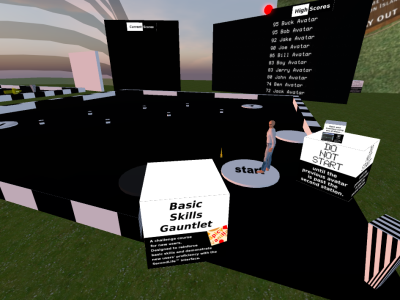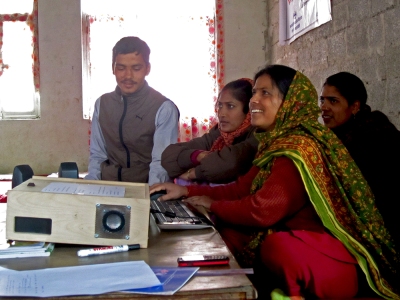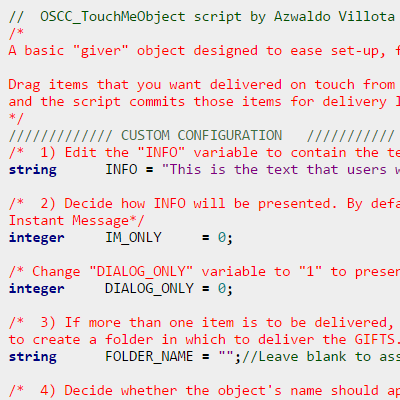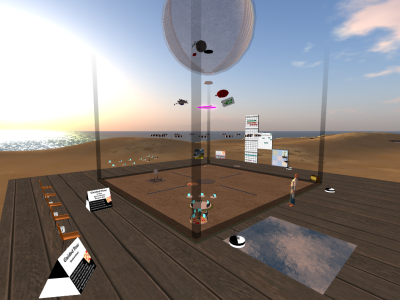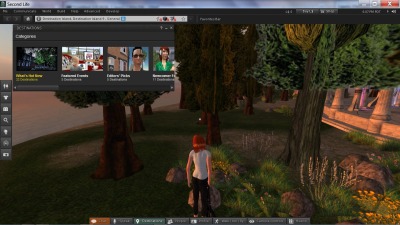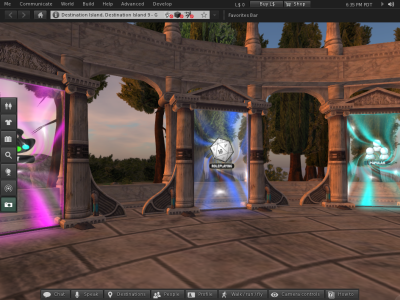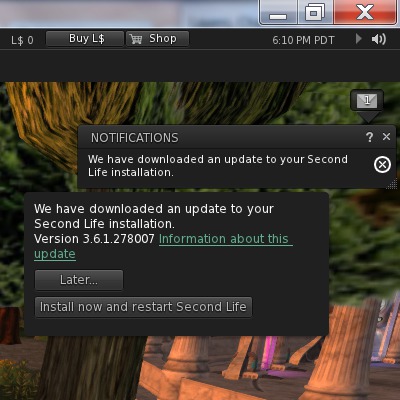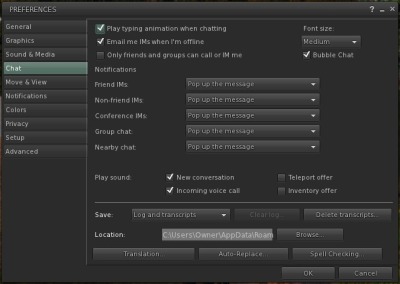Posts Tagged ‘instructional design’
Facilitating Synchronous Virtual World Meetings
 One of my first parcels in Second Life™ saw the design of an asynchronous meeting space. I had no idea who might ever visit my little space to have a conversation, much less did I ever think that seven of ’em would show up at one time. Still, I was prepared…
One of my first parcels in Second Life™ saw the design of an asynchronous meeting space. I had no idea who might ever visit my little space to have a conversation, much less did I ever think that seven of ’em would show up at one time. Still, I was prepared…
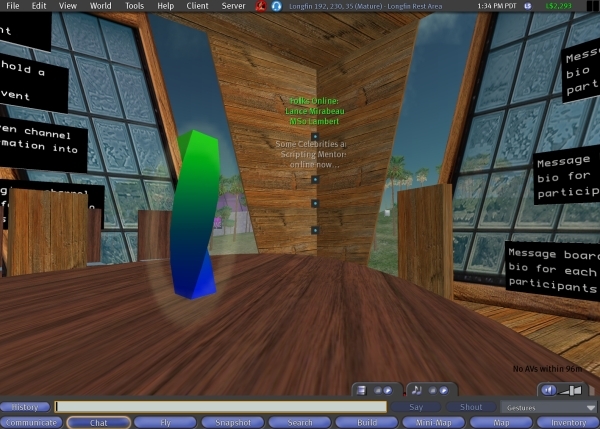
If you sat in a chair, you received a message with instructions on how to operate “your” message board (along with the remote channel on which to submit text, uniquely tied to “your” board).
If you saw a message on another board that you wanted to save (as in: chat log), you could touch that board and the message displayed was written to your chat history. Message saved.
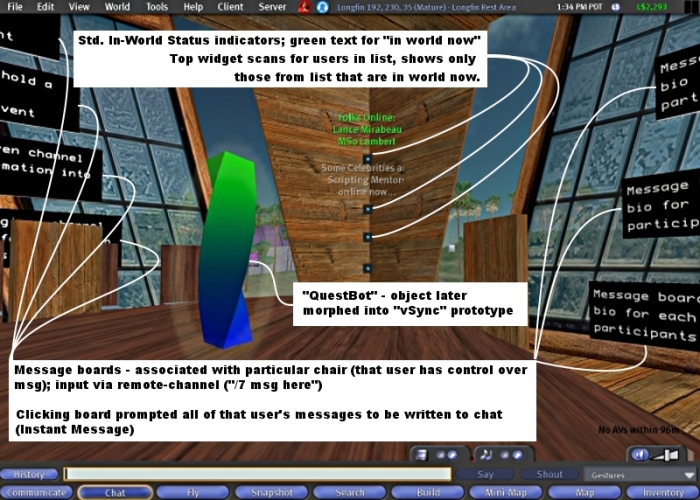
If you were early and wondered where the others were, you could look at the status indicators on the wall and see who’s in world…maybe touch the button to “ping” that user, or—knowing now that they were in world—you could send ’em an IM yourself.
That was years ago.
Today, the same thing takes place high above Chilbo, the earliest home for this wandering avatar. Objects and prims and textures and toys are being assembled to begin a rough sketch for the new project; however, it is actually just an elaborate scheme to attract top-shelf designers. “Hey Joey!” Azwaldo shouts, “Is this your roadmap?”
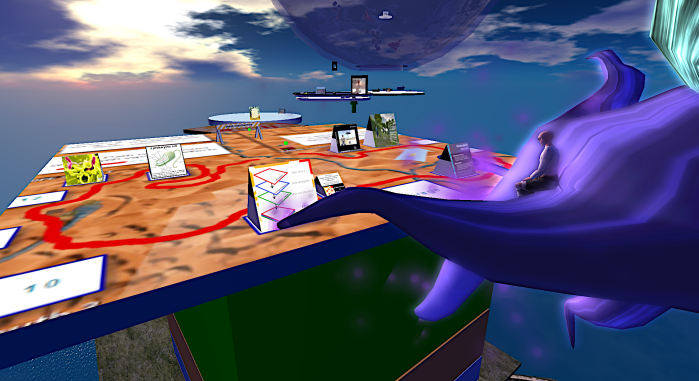
500 meter platform, Media Cafe in Chilbo The red wiggly line
is the roadmap for a quest, from an early VWBPE possibly?
whimsy, pedagogy, an icon retires
I avoided using the word pedagogy when I was a teacher. It always sounded like a disease, to me, a tropical thing…some infection of one’s ability to create lessons. (“You should be doing it like this!“)
But, whimsy? Whimsy runs wild in virtual worlds. For days, my avatar wore a shiny green hat that had its own website. My best vehicle scripting came on a goof, making a scrubbing brush to zoom the grid. Set off on a scoot-about, touring the mainland and stopping occasionally to modify this and tinker with that.
Making fun, while building.

Pedagogically, the fun must align with certain expectations. For example, the vehicle being designed for use in The Virtual Cell has peculiar requirements. Most challenging, it goes slow. Navigating in three dimensions through a maze-like model of a living cell calls for some of the finest tuning I have done with a vehicle.
I have begun to examine how to align the game (quest, adventure) with with several particular state standards; however, it seems that a broad discussion of instructional design is needed.

Just for example, the VC_UFO should
- respond to a variety of signals and environmental events
- track progress and offer help along the way
- engage users with entertainment, while delivering instruction
…all this, while also being easily piloted by the newest of users.
And now to important matters…

(Image: “Max Chatnoir … DELIVERS” by Flickr:kjarrett)
Today, Max Chatnoir passed a full-perms copy of “Mitochondria with ATP” (thanks, Mary Anne). Max is a leader in virtual world instructional design. Any rezident wishing to see the best could visit Genome Island. While we were chatting, I opened our chat history to review…always suspecting that I miss bits of chat, slow to the take. Sure enough, Max had told something me last session that I had missed: She is retiring.
End of an era? I have to wonder…
Because during the few minutes we visited, a handful of students living in Peru had been there, in Genome Island, learning about genetics. Max asked me if I spoke Portuguese. So, teachers are sending their students to Max’s world—from all around the world—because it is a cool place to learn.
And she thinks she’s retiring!
so many early design decisions

Pulled the Photosynthesis objects out for look. Supposing this were placed in the new project, several design questions come to light. For example, this interactive set of prims uses remote-channel chat text to signal events. This was an early design for me. I have since moved away from that technique, preferring to use LinkMessages.
However, seeing this old rig leads me to wonder: Would some use cases be served best by chat commands?
Oh, and the mod taking place above was to rotate the leaf stem to curl downward.
And: How can such an object be presented in a manner that encourages others to take it and make it better?
Also: Do I start putting interface buttons (“Turn Off”) on the left, or on the right?
*Edit:*
- How much content should be devoted to the new user experience? (A separate module be created, like a Basic Skills Gauntlet, and that could be installed where (and when) new users are expected.
- Max Chatnoir donated “Mitochodria with ATP” today. Is it enough that she has passed a full permission object, or should all contributions be saved immediately to an OAR (or LOR)?
- What is the threshold for scrutiny? For example, the image above captures me turning the leaf stem away and down. Little things can make a difference.
collaborative curriculum construction
A new group is forming, an experiment in collaborative design of educational content.
What if expert content creators worked with educators to produce educational content?
(from previous post)
The mission:
- To facilitate a series of collaborative designs
that deliver effective educational content,
providing the best user experience we can muster. - To observe design principles and techniques
used by expert content creators.
If you remember Studio Wikitecture the approach is similar; gather experienced content creators (and educators), toss in an interesting design challenge, and mix until finished.
The first design challenge, SV1.0 – the Basic Skills Gauntlet has produced a prototype…
to be presented at the VWBPE 2013 conference:
A poster presentation will also be displayed throughout the event at this location: SLURL.
Spicy Vanilla is an open enrollment group; a quick SL-search and click…you’re in!
- Join to participate in the next project
- Join to see updates and announcements
- Join just to watch from the sidelines.
If you would rather visit first, in world, contact Weebit Offcourse or Azwaldo Villota.
Next on the agenda:
- Survey participants to document design principles and techniques, and
- A call for proposals* for the next project.
* What would YOU build if you had a team of designers alongside? What educational activity or lesson idea have you noodled with long enough to share with the community?
There is much appreciation to express to Tom Layton (SL: ArthurConan Doyle) for donating space for the first project; to Selby for the invitation to post in his blog, to existing members and SLED respondents to the project surveys.
Holler any time.
Video Vocab, Looma, and a new virtual world
I have recently learned about a small non-profit that is working to deliver ICT support to rural educators in Nepal.
That’s right, Information & Communication Technology in the villages and classrooms of the Himalayas.
VillageTech Solutions have designed Looma, a standalone audio-visual device that
- is self-powered (solar-rechargeable batter)
- is operated with a wireless “wand”
- has a built-in audio system
- comes loaded with CC-Licensed content (games, videos, songs, etc.)
The device projects the “desktop” onto a wall and comes with a hand-held mouse (the “wand”) to navigate. The prototype has been field tested and now they are looking for volunteers to help search for—and evaluate—content that can be loaded into the drive. (Most classrooms in rural Nepal have no electricity, much less an Internet connection.)
I would write a bit more; but, I am up to my elbows producing some educational content…gotta go. Holler at “azwaldo” at gmail dot com, anytime.
Site Preview HUD
Update: Demo stays for a while.
I have designed a new tool, and now invite you to try it out.
At last year’s VWBPE conference (previous post) I wanted to give visitors a quick, customized tour of a design I was presenting…even when I was AFK.
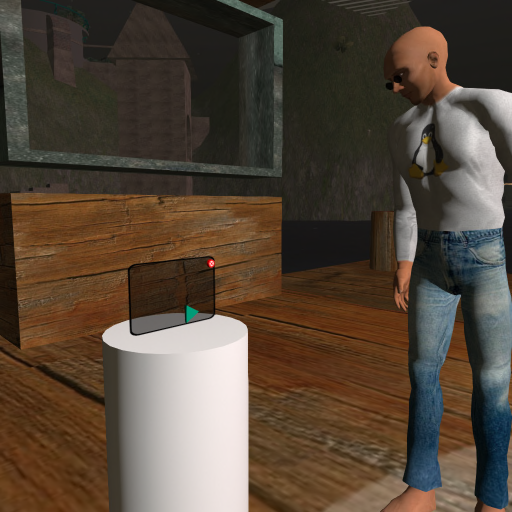
Demonstration vendor in
my parcel, in Urdu
This “Site Preview HUD”
- combines scripted camera movement with audio narration
- is “touch to wear”
- is temporary, nothing is added to Inventory
- quickly shows the points of interest in a region or build
I am not selling this object.
This is not an advertisement.
This effect is new to me; so, it may be new to others, as well. I would be happy to share full-perm copies with the right users. (The hard part is creating .wav files, setting camera coordinates.)
You can find* it here: SLURL (updated Aug ’21)
*
There is also a Notecard at the demo location. Please share that—or this link—with others.
real world knowledge via virtual world content
One of my earliest design gigs in virtual worlds was the development of a HUD* used by students learning the Chinese language. After four or five years, that design is still in use. The image below is from the Chinese Island simulation.
* Heads Up Display – an interactive display with buttons and text that mediates their interaction with the virtual environment.

Note the blue dialog prompt, and the HUD in upper and left perimeters.
Early next year, a group of Monash University students will enter the virtual world of SecondLife™ to experience a variety of simulations; a restaurant, an airport, a medical clinic and a train station. Later, they will actually travel to Italy for a program of study, abroad.
The virtual environment in which they will immerse themselves is modeled on the neighborhood in Italy where they will be staying. The simulations are designed to prepare them for their visit. They will study maps, use currency, become familiar with local fixtures…like signs.
In support of the Italian Studies project, I am developing interactive objects—mainly the scripts—to provide a number of interactions. Students can open a “wallet” at the “ATM” and withdraw virtual currency, then visit a coffee shop and…maybe purchase a cappucino. On touching some of the things they see (think “mouse click”), the name of that object appears as text in Italian and they hear an audio-stream pronunciation of the term.
They will be required to buy tickets, read a public transit schedule, and complete many other tasks during their lessons.
My mother and I did something similar before our visit to New York City. After opening Google Earth and “roaming” the virtual streets around our hotel to prepare for our trip, we were able to navigate that neighborhood as though we had been there before.
So, thanks Mom…for helping field test this sort of technology.
looks like it’s my deal
The new LEA project has reached its first critical juncture. Documents are there, pared, and shared; notecard invitations to group collaboration passed about liberally; tools for communicating on site have been deployed. Land is claimed, and
…a few rough sketches now dot the landscape or hang in mid-air, waiting for what comes next: the one question which must be answered before much else happens…
What is our objective?
At the beginning of each year as a science teacher I evaluated my classroom curriculum, rearranged topics and re-prioritized lessons; I shuffled the deck. Often a science department, district committee, or state board would hand down a new set of curriculum guidelines. This usually meant simply identifying what items in the new list I was already addressing.
Nothing to see here, folks; move along.
But then, every few years, the federal government, scientific and—let’s face it—corporate communities decide to crumple up the old list, toss it in a basket, and start from scratch. With the release of new science education standards in April, the National Academies of Science have endorsed a new deal.
They’ve called for a new deck.
I have typically been pleased to see the changes in focus, the new language for science learning that comes with new national standards or guidelines. This round is no exception.
It is worth mention that these new standards are not a mandate, are not supported by all states. Many states will never recognize their merit, and others will take years to implement through adoption and articulation. With science education curriculum guidelines, there actually is no such thing as a national standard. That is just what some of us call them, out of convenience.
I also know that where the rubber hits the road is in each teacher, department, or curriculum committee’s interpretation of such standards. Every lesson is one person’s spin on what was prescribed. This applies to content providers, too. Folks who make textbooks, for example, are jumping on these standards like they are putting out a fire. I have seen it. And, different users interpret standards differently.
This also applies to the design of The Virtual Cell. Where we go with this new compass we have been given is up to us. What we do with the full region granted for this demonstration follows from our own interpretation of those same standards.
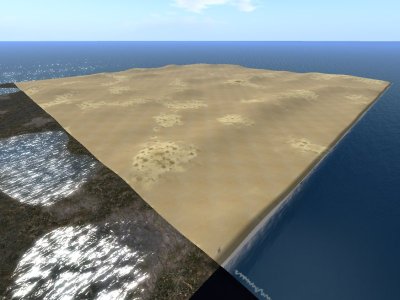 Empty simulator, ripe for noodling.
Empty simulator, ripe for noodling.
Anyone for a game of 52 pick-up?
The discussion has begun regarding how to address standards, how to provide support for classroom instruction that is targeted and effective yet still wide-ranging in its application. After all, “if it doesn’t address my state’s guidelines, I cannot use it”.
Yet, one size will never fit all. While chatting at a recent conference exhibit of an activity for new users, one educator observed that there should be more notecards (with instructions). I had heard this same comment once already, just before the event. Later, the next day, another visitor observed “there are too many notecards.” I just heard that very same comment again, for the very same design, yesterday.
They are all correct, of course. There are too many notecards, and…we need more notecards. It should be black; and, it really should be white. You just have to “remember who your audience is.”
To emphasize a point and begin making the case for a particular design approach, I must mangle a maxim:
You can please all of the people with some of the content.
You can please some of the people with all of the content.
But, you can never please all of the people with all of the content.
With three months to build an interactive, standards-based, highly engaging and interesting activity—with three months to make upwards of three to five hundred lesser decisions (best guess, conservatively)—with three months to organize a collaborative team willing to offer their work free of charge in the interest of helping to further demonstrate that virtual worlds really do have a place in the classroom…this issue needs to be resolved quickly.
A number of performance indicators in the new standards are obviously ripe for a virtual world experience teaching about the cell. And, it is just as obvious that one could quickly bite off more than one can chew, if you look at the list. With three months to build, the question becomes “What might we achieve?”
But, to digress for a moment, what we might achieve depends on who is pitching in…even if only offering 2¢. For this project to reach its potential, if the build even begins to approach what I try to imagine, any number of experienced—dare I say, expert—content creators will have played their hand.
So far,
- a wizard has conjured a vehicle,
- several members of one group of biologists have expressed an interest,
- a SecondLife™ entrepreneur has offered to make introductions to various said experts, and
- a fantastical feline has been purring about some pretty proper prims.
So, to table the “standards” conversation for a moment, I’ll ask an even more practical question. It looks like it’s my deal…
